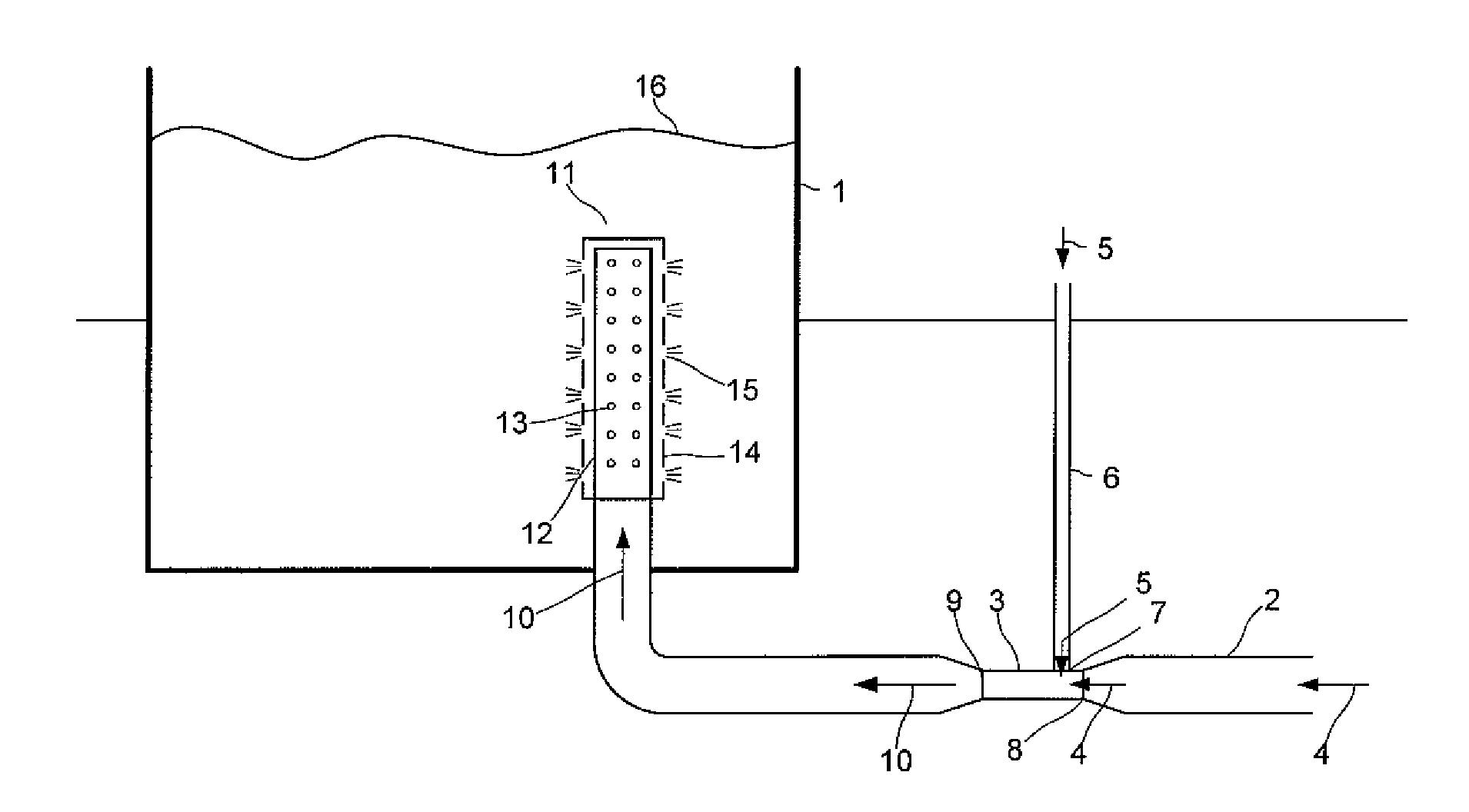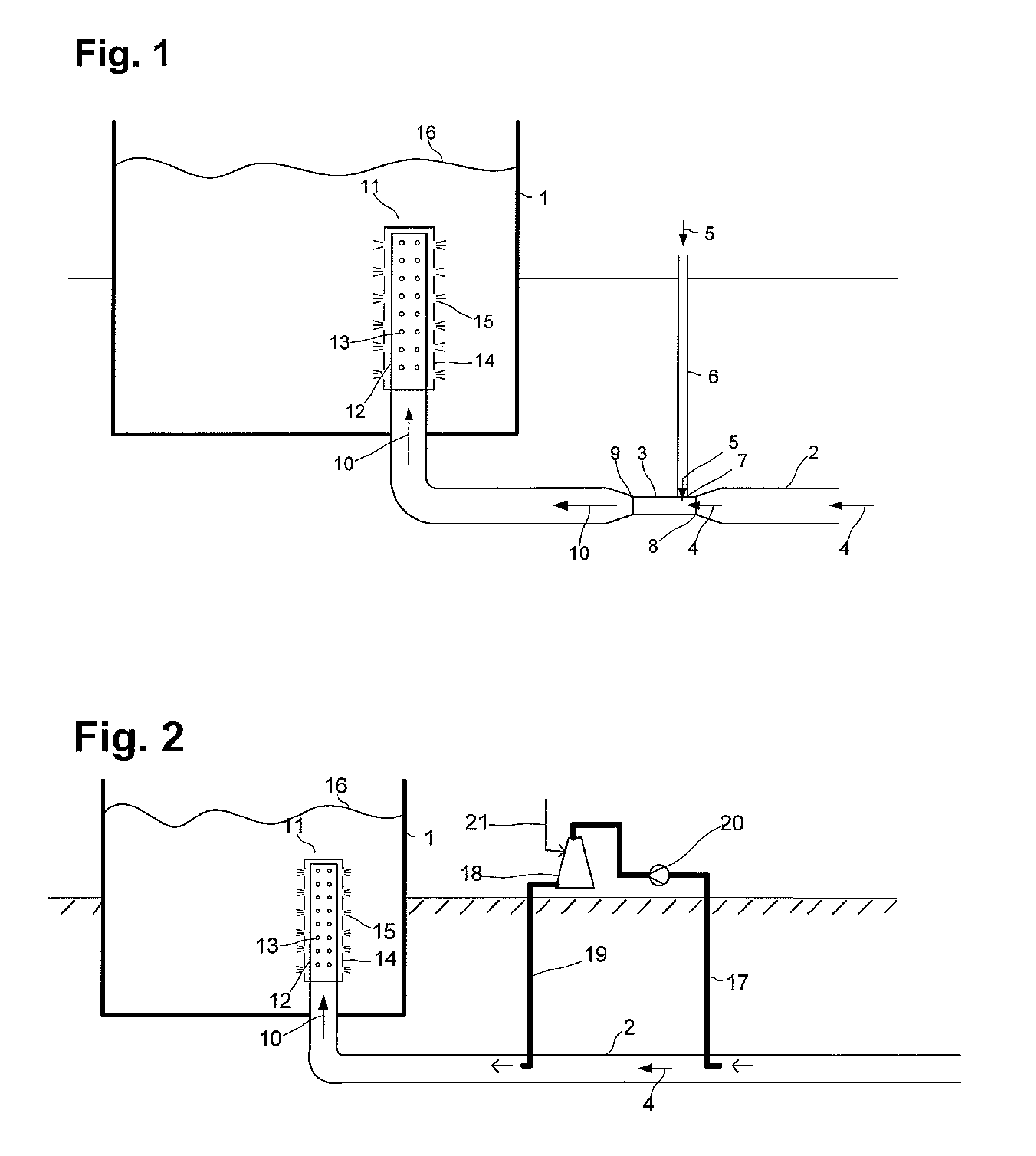Method to reduce nitrogen concentration in water
- Summary
- Abstract
- Description
- Claims
- Application Information
AI Technical Summary
Benefits of technology
Problems solved by technology
Method used
Image
Examples
Embodiment Construction
[0017]According to the invention an oxygen-containing gas, preferably pure oxygen, is introduced into a fluid stream, especially in a water stream, which shall then be introduced into a tank with salt water. The introduction of the gas into the fluid stream is carried out either inline or in a bypass line as described in more detail below. The oxygen enriched fluid stream, i.e. the fluid stream comprising the oxygen containing bubbles, is then fed to the tank with the salt water via a fluid feed line at a height below the level of the salt water in the tank; that is the level of the salt water is above the fluid feed line.
[0018]When the fluid feed line is arranged over the rim of the tank as in the prior art or, in general, when the fluid feed line raises to a height above the level of the water inside the tank, the pressure drops according to the reduced hydrostatic pressure and there is a considerable risk that the small micro bubbles become larger bubbles and that oxygen which ha...
PUM
| Property | Measurement | Unit |
|---|---|---|
| Pressure | aaaaa | aaaaa |
| Pressure | aaaaa | aaaaa |
| Length | aaaaa | aaaaa |
Abstract
Description
Claims
Application Information
 Login to View More
Login to View More - R&D
- Intellectual Property
- Life Sciences
- Materials
- Tech Scout
- Unparalleled Data Quality
- Higher Quality Content
- 60% Fewer Hallucinations
Browse by: Latest US Patents, China's latest patents, Technical Efficacy Thesaurus, Application Domain, Technology Topic, Popular Technical Reports.
© 2025 PatSnap. All rights reserved.Legal|Privacy policy|Modern Slavery Act Transparency Statement|Sitemap|About US| Contact US: help@patsnap.com


